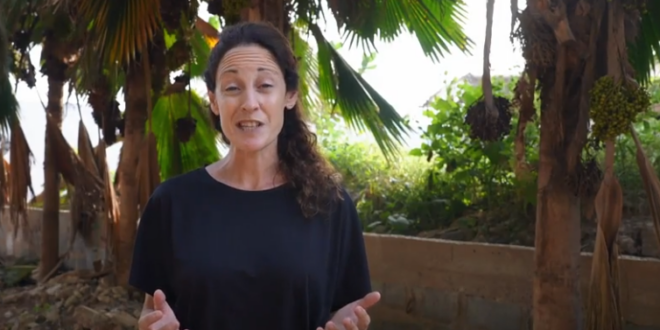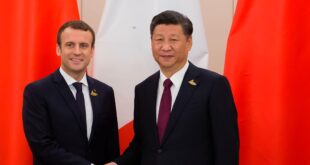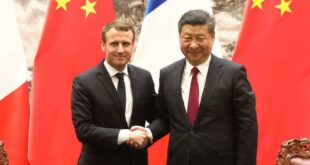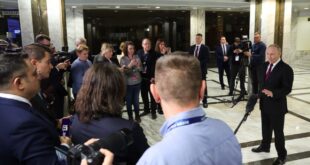Muhamad Yehia
GOMA, Congo — The end of one of the world’s deadliest and yet most shadowy wars is as difficult to predict as the end of the large peacekeeping force meant to contain it.
Congo desperately wants stability in its mineral-rich east, of intense interest to the global economy. But political friction means the government wants the longtime United Nations peacekeeping force there to get out.
That would leave the vast region, overrun with dozens of armed groups including one affiliated with the Islamic State organization, with even less defense for millions of displaced civilians. But frustration has become so high with the peacekeepers that many Congolese want them gone, too.
The Associated Press witnessed the dilemma on a rare visit and night patrol with the U.N. force now known as MONUSCO, which entered Congo more than two decades ago and has 14,000 peacekeepers on the ground
It patrols a landscape that feels far from the authority of Congo’s government, with its dirt roads churned into slippery mud in pounding rains and residents long accustomed to feeling that, security-wise, they are on their own. Some of the region’s armed groups are self-defense collectives.
During a visit to one frontline town, Sake, about 14 miles (24 kilometers) from the regional hub of Goma, the AP spoke with militia members trying to defend the population from a resurgent group, the M23, and its sniper fire from surrounding hills
The M23 is backed by neighboring Rwanda, whose government denies it. The involvement of better-equipped Rwandan forces, with U.N. experts estimating up to 4,000 of them in Congo, has led to talk of war by Congo’s government.
A July truce brokered by the United States and Angola has reduced the fighting between Rwandan and Congolese forces, but clashes between M23 and other militias continue.
“We are fighting the enemy who is a foreigner in our country. They are not Congolese, but they want to take Congo,” said one fighter, Amini Bauma
Sake is one of the last main routes into Goma under government control, but fierce fighting this year forced most residents to flee, leaving boarded-up homes.
About 160 civilians and soldiers came through Sake’s military hospital during the summer, most with gunshot wounds, said Omar Kalamo, a nurse. In August, a bomb exploded behind the building, he said.
Some who fled are now returning, finding little safety elsewhere. Bitakuya Buhesha found his house destroyed. But he said he’d rather brave the gunfire than live in displacement camps, which have been infiltrated by fighters.
“We’ve waited a long time and we do don’t know whether our army will win this war or if it’ll be the M23 rebels,” he said.
Many Congolese who once looked to the U.N. peacekeeping force with hope are now angry. Multiple protests, some of them violent, have targeted the force in recent years.
Last year, at Congo’s request, the U.N. Security Council voted unanimously to draw down the peacekeeping force and gradually hand over its security responsibilities to Congo’s government by this December
But the soaring violence means that departure is now delayed.
On a recent day, peacekeepers in armored vehicles pulled into a small base in the hazy hills outside Goma, its tents surrounded by looping razor wire and sandbags. Troops perched with a machine gun pointed in the rebels’ direction.
In recent months, clashes between Congo’s army and M23 came within a mile of the base.
The U.N. force is trying to find new ways to repel the rebels. Last year, it established new bases between the frontlines and about 600,000 displaced people sheltering around Goma. It is training Congolese soldiers in the hope that they can fill the security void once it leaves.
“If the belligerent armed groups had come forward and attacked the civilians, the MONUSCO would have changed its stance purely from defensive to offensive operations,” said U.N’s center sector commander for North Kivu province, Brig. General Ranjan Mahajan.
MONUSCO described the security challenges “multiple and multifaceted” and said only one of its brigades is tasked to go on the offensive. That affects a single area, Beni, where deadly attacks have been especially frequent. The U.N. mission otherwise is defensive and works alongside Congolese forces and others
But some Congolese, who see the U.N. force as not aggressive enough, said any new efforts to protect them are futile.
“You can see that MONUSCO is there, but that’s in name only … People are dying, but it does nothing,” said Maombie Aline, a displaced person in Goma.
And yet, the international community has warned that the U.N. force’s pullout would leave a security vacuum. More than 80% of Congo’s 7 million displaced people live in areas protected by the U.N., according to the Africa Center for Strategic Studies.
Last month, the U.S. ambassador to the U.N., Linda Thomas-Greenfield, said the peacekeepers’ pullout from South Kivu province in June left critical gaps, and the Security Council shouldn’t authorize further withdrawals until there’s a plan to mitigate them. The U.S. is the force’s top financial supporter
Congo’s communication minister, Patrick Muyaya, said there would be a new timeline for MONUSCO’s departure, but didn’t give details. He said a joint team of government and U.N. officials was evaluating the situation.
Goma’s streets are full of armed men, local and foreign. In addition to the U.N. force and an unknown number of Congolese forces, there are about 1,000 foreign mercenaries, a coalition of local militia and a Southern African regional force. A recently deployed East African force was kicked out amid criticism it was ineffective.
“It’s a military jungle,” said Onesphore Sematumba, a Congolese researcher for the International Crisis Group. “There are many actors, but everyone has their own agenda … they can’t make a difference because they are divided.”
Global interest in eastern Congo’s minerals is one reason the violence is so difficult to be contained, experts said.
Congo is the world’s largest producer of cobalt, a mineral used to make lithium-ion batteries for electric vehicles and smartphones. It also has substantial gold, diamond, copper and cobalt reserves.
In May, M23 fighters seized the town of Rubaya, which holds deposits of tantalum — used in electronics, including Apple devices —and extracted from coltan. The area is estimated to supply more than 15% of global production of tantalum and now generates about $300,000 a month for M23, said Bintou Keita, head of Congo’s U.N. mission
U.N. experts in June said a portion of Rubaya minerals have been smuggled across the Rwandan border.
Rwanda is selling minerals from eastern Congo and passing them off as conflict-free, said Darren Davids, an analyst with the Economist Intelligence Unit — allegations documented by both U.N experts and the U.S.
Davids said the international community has hesitated to meaningfully call on Rwanda to stop the fighting because it has become a reliable trading partner for the West as competition grows for the minerals.
Meanwhile, the Rwandan-backed rebels are accused of obstructing and threatening the U.N. mission so it can seize more territory, and are widely expected to benefit from its departure
Rwanda’s government and M23 didn’t respond to requests for comment.
with the peacekeepers that many Congolese want them gone, too.
The Associated Press witnessed the dilemma on a rare visit and night patrol with the U.N. force now known as MONUSCO, which entered Congo more than two decades ago and has 14,000 peacekeepers on the ground
It patrols a landscape that feels far from the authority of Congo’s government, with its dirt roads churned into slippery mud in pounding rains and residents long accustomed to feeling that, security-wise, they are on their own. Some of the region’s armed groups are self-defense collectives.
During a visit to one frontline town, Sake, about 14 miles (24 kilometers) from the regional hub of Goma, the AP spoke with militia members trying to defend the population from a resurgent group, the M23, and its sniper fire from surrounding hills
The M23 is backed by neighboring Rwanda, whose government denies it. The involvement of better-equipped Rwandan forces, with U.N. experts estimating up to 4,000 of them in Congo, has led to talk of war by Congo’s government.
A July truce brokered by the United States and Angola has reduced the fighting between Rwandan and Congolese forces, but clashes between M23 and other militias continue.
“We are fighting the enemy who is a foreigner in our country. They are not Congolese, but they want to take Congo,” said one fighter, Amini Bauma
Sake is one of the last main routes into Goma under government control, but fierce fighting this year forced most residents to flee, leaving boarded-up homes.
About 160 civilians and soldiers came through Sake’s military hospital during the summer, most with gunshot wounds, said Omar Kalamo, a nurse. In August, a bomb exploded behind the building, he said.
Some who fled are now returning, finding little safety elsewhere. Bitakuya Buhesha found his house destroyed. But he said he’d rather brave the gunfire than live in displacement camps, which have been infiltrated by fighters.
“We’ve waited a long time and we do don’t know whether our army will win this war or if it’ll be the M23 rebels,” he said.
Many Congolese who once looked to the U.N. peacekeeping force with hope are now angry. Multiple protests, some of them violent, have targeted the force in recent years.
Last year, at Congo’s request, the U.N. Security Council voted unanimously to draw down the peacekeeping force and gradually hand over its security responsibilities to Congo’s government by this December
But the soaring violence means that departure is now delayed.
On a recent day, peacekeepers in armored vehicles pulled into a small base in the hazy hills outside Goma, its tents surrounded by looping razor wire and sandbags. Troops perched with a machine gun pointed in the rebels’ direction.
In recent months, clashes between Congo’s army and M23 came within a mile of the base.
The U.N. force is trying to find new ways to repel the rebels. Last year, it established new bases between the frontlines and about 600,000 displaced people sheltering around Goma. It is training Congolese soldiers in the hope that they can fill the security void once it leaves.
“If the belligerent armed groups had come forward and attacked the civilians, the MONUSCO would have changed its stance purely from defensive to offensive operations,” said U.N’s center sector commander for North Kivu province, Brig. General Ranjan Mahajan.
MONUSCO described the security challenges “multiple and multifaceted” and said only one of its brigades is tasked to go on the offensive. That affects a single area, Beni, where deadly attacks have been especially frequent. The U.N. mission otherwise is defensive and works alongside Congolese forces and others
But some Congolese, who see the U.N. force as not aggressive enough, said any new efforts to protect them are futile.
“You can see that MONUSCO is there, but that’s in name only … People are dying, but it does nothing,” said Maombie Aline, a displaced person in Goma.
And yet, the international community has warned that the U.N. force’s pullout would leave a security vacuum. More than 80% of Congo’s 7 million displaced people live in areas protected by the U.N., according to the Africa Center for Strategic Studies.
Last month, the U.S. ambassador to the U.N., Linda Thomas-Greenfield, said the peacekeepers’ pullout from South Kivu province in June left critical gaps, and the Security Council shouldn’t authorize further withdrawals until there’s a plan to mitigate them. The U.S. is the force’s top financial supporter
Congo’s communication minister, Patrick Muyaya, said there would be a new timeline for MONUSCO’s departure, but didn’t give details. He said a joint team of government and U.N. officials was evaluating the situation.
Goma’s streets are full of armed men, local and foreign. In addition to the U.N. force and an unknown number of Congolese forces, there are about 1,000 foreign mercenaries, a coalition of local militia and a Southern African regional force. A recently deployed East African force was kicked out amid criticism it was ineffective.
“It’s a military jungle,” said Onesphore Sematumba, a Congolese researcher for the International Crisis Group. “There are many actors, but everyone has their own agenda … they can’t make a difference because they are divided.”
Global interest in eastern Congo’s minerals is one reason the violence is so difficult to be contained, experts said.
Congo is the world’s largest producer of cobalt, a mineral used to make lithium-ion batteries for electric vehicles and smartphones. It also has substantial gold, diamond, copper and cobalt reserves.
In May, M23 fighters seized the town of Rubaya, which holds deposits of tantalum — used in electronics, including Apple devices —and extracted from coltan. The area is estimated to supply more than 15% of global production of tantalum and now generates about $300,000 a month for M23, said Bintou Keita, head of Congo’s U.N. mission
U.N. experts in June said a portion of Rubaya minerals have been smuggled across the Rwandan border.
Rwanda is selling minerals from eastern Congo and passing them off as conflict-free, said Darren Davids, an analyst with the Economist Intelligence Unit — allegations documented by both U.N experts and the U.S.
Davids said the international community has hesitated to meaningfully call on Rwanda to stop the fighting because it has become a reliable trading partner for the West as competition grows for the minerals.
Meanwhile, the Rwandan-backed rebels are accused of obstructing and threatening the U.N. mission so it can seize more territory, and are widely expected to benefit from its departure.
Rwanda’s government and M23 didn’t respond to requests for comment.
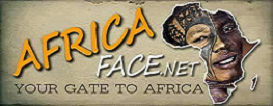 موقع وجه أفريقيا موقع وجه أفريقيا هو موقع مهتم بمتابعة التطورات في القارة الأفريقية
موقع وجه أفريقيا موقع وجه أفريقيا هو موقع مهتم بمتابعة التطورات في القارة الأفريقية
